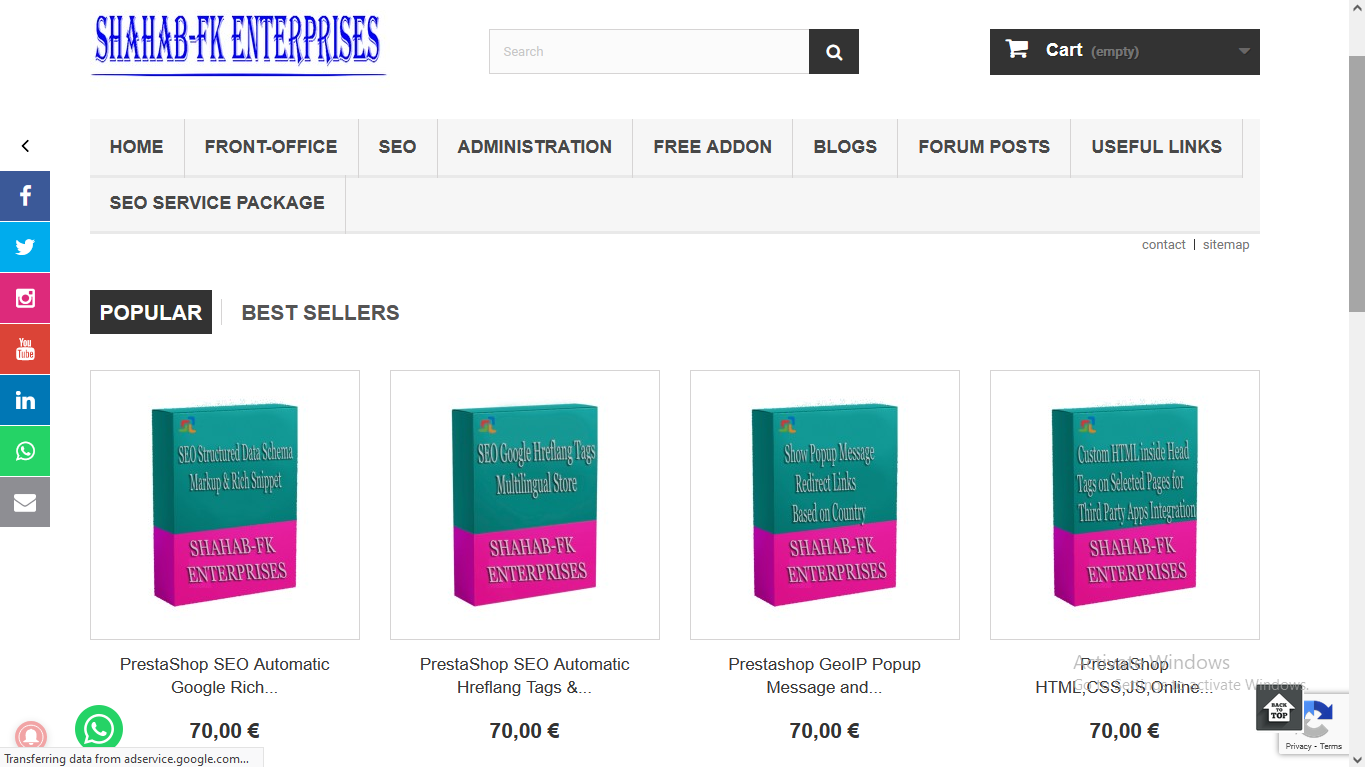Improving the speed of your PrestaShop website is crucial for providing a better user experience and improving your search engine rankings. Here are several steps you can take to make your PrestaShop website faster:
- Choose a Good Hosting Provider: Select a hosting provider that specializes in hosting PrestaShop. Ensure they offer fast and reliable servers with good uptime and support for your specific PrestaShop version.
- Use the Latest PrestaShop Version: Keep your PrestaShop installation up to date. Newer versions often come with performance improvements and security fixes.
- Optimize Images: Large images can slow down your website significantly. Use image optimization tools or plugins to compress and resize images without compromising quality. PrestaShop has built-in image optimization features.
- Enable Caching: Utilize caching mechanisms to store static content and reduce server load. PrestaShop has a built-in caching system that you can enable in the back office.
- Content Delivery Network (CDN): Implement a CDN to distribute your website’s assets (images, scripts, stylesheets) across multiple servers worldwide. This reduces server load and speeds up content delivery.
- Minimize HTTP Requests: Reduce the number of HTTP requests by combining CSS and JavaScript files, using CSS sprites, and minimizing the use of external scripts and stylesheets.
- Enable GZIP Compression: Enable GZIP compression on your server to compress files before they are sent to the browser, reducing file size and load times.
- Optimize Database: Regularly optimize your PrestaShop database by removing unnecessary data and optimizing database tables. PrestaShop has a built-in feature for this purpose.
- Use Lazy Loading: Implement lazy loading for images and other assets. This technique loads content as the user scrolls down the page, improving initial load times.
- Minimize Third-party Plugins and Modules: Be cautious with third-party plugins and modules. Some poorly coded or unnecessary modules can slow down your website. Only install and activate the ones you truly need.
- Reduce Redirects: Minimize the use of redirects, as they add extra HTTP requests and delay page loading.
- Enable Browser Caching: Configure your server to leverage browser caching, so returning visitors can load your site faster.
- Optimize TTFB (Time to First Byte): Ensure your server responds quickly to requests. This can involve server optimization, using a Content Delivery Network, and minimizing server-side processing time.
- Monitor and Audit Your Website: Regularly monitor your website’s performance using tools like Google PageSpeed Insights, GTmetrix, or Pingdom. Conduct regular audits to identify and fix performance bottlenecks.
- Consider a Faster Theme: Some PrestaShop themes are faster and more optimized than others. Consider switching to a lightweight and well-coded theme if your current theme is causing performance issues.
- Use Content Delivery Network (CDN): Implementing a CDN can distribute your website’s content across multiple servers around the world, reducing latency and speeding up loading times for visitors from different locations.
- Reduce External Resources: Minimize the use of external resources like social media widgets and external fonts, as they can slow down your site’s loading times.
- Database Indexing: Ensure that your database tables are properly indexed. Proper indexing can significantly improve database query performance.
- Server-Level Optimization: Consider server-level optimizations such as using PHP opcode caching (e.g., OPCache), tuning your server’s configuration for PrestaShop, and using solid-state drives (SSDs) for storage.
- Regularly Monitor and Test: Performance optimization is an ongoing process. Regularly monitor your site’s performance and conduct performance tests to identify and address any new issues that may arise.
Remember that the impact of each optimization may vary depending on your specific website and hosting environment, so it’s essential to test and measure the results after implementing changes. Additionally, if you’re not comfortable making these optimizations yourself, consider hiring a web developer or a PrestaShop specialist to help you improve your website’s speed.

